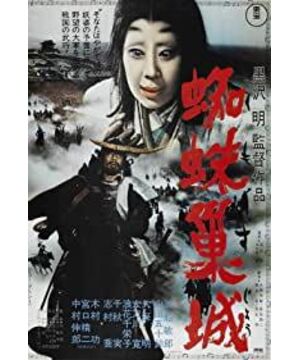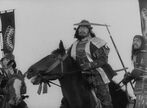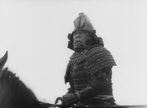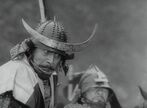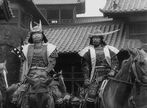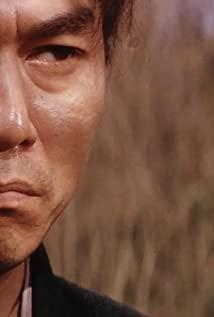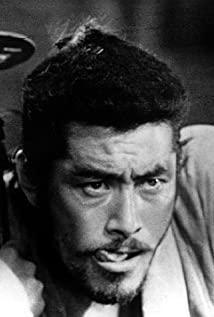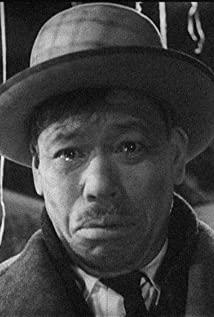In Europe, drama has a history of more than two thousand years, and the age of movies is less than a century. But they are a pair of "sister art" closely related. American film theorist Howard. Lawson once said: "The structure and technique of film reflect a new stage in the historical evolution of the dramatic form." In his opinion, it is drama that provides a structural form for film. However, we must not confuse the two. As the author of the "Seventh Art Manifesto" pointed out by the Italian Canudu, "The first error that should be eliminated is the error of subordinating film to theater." In fact, film is composed of theater art. A comprehensive art of "new characteristics" born out of China. The two have both "close relatives" and "specificity", and they are two independent art forms.
When it comes to "close relatives", since drama provides a "noble theme" for movies, the impact of specific drama works on movies cannot be underestimated. The dramas of Shakespeare's mature period are undoubtedly full of charm. According to statistics, as of 1970 alone, there were 3 "Othello", 2 "Hamlet", 3 "Macbeth", and 2 "Joulis. "Caesar" and the two "King Lear" were taken by Lawrence. Oliver, Orson. Wells, Kurosawa Akira and Gregory Gregory. Film masters such as Ke Jingtsev have appeared on screens all over the world.
It can be said that the adaptation of Shakespeare's play into the history of the film is to adapt the film to the history of Shakespeare. Because the adaptation of stage plays, especially the works of art masters like Shakespeare, cannot be unfettered by the original play. George of the United States. Bruce Tung pointedly pointed out: "Some films adapted from Shakespeare's plays have failed to adapt the fixed space of the stage to the space of the film, and they often appear dull and rapport." This is a common problem after the adaptation of stage plays into movies.
The least of this common problem and the "most thorough and satisfying so far" adaptation is probably the attempt by the famous Japanese film director and playwright Akira Kurosawa. Kurosawa is one of the world's famous directors. He opened the door of the world with a series of masterpieces such as "Rashomon" and "Shadow Samurai", thus "bringing Japanese cinema into a new era." His films "Spider Web Castle" (1957) and "Chaos" (1985) adapted from Shakespeare's famous plays "Macbeth" and "King Lear" were widely regarded when they were released in the West. Influential people in the Western film industry agree that Kurosawa’s films are far better than Western films adapted from Shakespeare’s same play, both in terms of performance techniques and artistic achievements. The adaptation principle of “fixed space adapts to the space of the screen”.
This article attempts to illustrate the fundamental changes in form and content from Shakespeare’s stage to Kurosawa’s screen by comparing "Spider Web Palace" and "Ran" with the original, and to prove why Kurosawa was successful of.
(1) A
general overview of the original works and adaptations. It is not difficult to see that although the two films "Spider Web Castle" and "Chaos" are based on Elizabethan dramas, the story background has moved from the medieval Scottish wasteland to the same period. In the Japanese archipelago, the characters are no longer European knights and kings, but samurai and overlords of the Japanese Warring States Period. Although Kurosawa borrowed the plot of Shakespeare, it has given new connotations. Therefore, he did not simply copy the original work, but controlled the original intent and created a new chapter. The film was completely "Japanese". We will elaborate on this point later.
Here, let’s put aside the similarities and differences in content. In terms of formal factors alone, the adapted version and the original work are two different forms of art. In the adaptation, in fact, it has been unable to identify anything translated from the original. Kurosawa gives the story a new look with his clever cinematic expression technique. The main reason that film leaves drama and becomes an independent art lies in the camera and the artistic possibilities provided by it, the grammar and syntax of the picture organization, and so on.
In my opinion, the formal "specificity" between the adaptation and the original work actually reflects the different characteristics of the two "sister arts" of film and drama. Mainly manifested in three aspects:
First, intuitiveness-two different kinds of intuitive art
Generally speaking, drama and film are not audiovisual arts that create perceptual and intuitive images. However, the intuitiveness of the two is different: the main component of the drama is the auditory image-the lines of the characters, and all kinds of conflicts are mainly unfolded in the dialogue; while the film focuses more on the visual image-the external physical action, focusing on The unity of the characters and the natural environment, so as to obtain a real screen and cinematic. These are two very different ways of thinking of theater and film artists.
In Shakespeare's script, there are enthusiasm or philosophical pentameter verses everywhere. Obviously, the most far-reaching significance of Shakespeare's plays lies in the dramatic poems and proses used to express actions and make them humane. This is related to the form of the stage in the Elizabethan era. This kind of stage has no setting, only a few props and occasional flags, so that it can see the change of location. Therefore, Shakespeare’s stage maximizes the use of dialogue to explain the conflict and promote the plot, and dialogue has become a basic part of his play. Even the third scene of the second act of "King Lear" is entirely composed of Edgar's narration, which can be said to be an extreme proof of the theater's emphasis on auditory images.
But there is no doubt that although Shakespeare’s pentameter poem is beautiful, it does not match the visual image that followed on the screen. Film narration does not rely on the appeal of the lines, but on the material components of the world depicted. Kurosawa grasped this well. In the table book he wrote, he discarded dialogue as much as possible, but recreated the image of Shakespeare's poetry with a unique and carefully conceived visual image. For example, in "Ran", when Saburo Naoho (equivalent to King Lear’s young daughter Kaudelia)’s sincere feelings for his father Wang Yiwen Xiuhu (King Lear) was expressed, it changed the way that the original work completely uses character lines as an explanation. , And adopted a detail:
"The sun in midsummer shines on the sleeping Xiuhu, Saburo folds down a few early-flowering lespedeza flowers to shade his father."
This is a very cinematic and intuitive lens, which is silent at this time. Sound.
Kurosawa's characters "only speak when they cannot be expressed in any other way". In "Spider Web Palace", Toshiro Mifune (Macbeth) and Isuzu Yamada (Mrs. Macbeth) as Asaka (Mrs. Macbeth) are like this. In fact, they seldom speak, and they "think in another way." A scene like "King Killing", in the original work is carried out through the dialogue between the Macbeths and the couple, although there are also characters coming and going on the field. But that is only a necessary part of the plot. And in Kurosawa Akira's table book, there is no line in this section:
"25. The inactive room
Takeshi sits alone in the middle of the room. The candle flame beats, and the shadow of Takeshi also beats. The atmosphere is gloomy. Takeshi. Shi was blankly looking straight, his eyes covered with bloodshot eyes.
The blood on the wall panels. Wu Shi avoided it. On the floor, there was also a strange human figure made up of blood. Wu Shi suddenly stood up anxiously, but stood sideways.
Qian Mao held it in his hand. The spear enters the room quietly. Wu Shi advances and retreats. Asamao forces him to take the spear. The two are pale and stare at each other.
26. The sky
is like a crescent moon like a sickle, and the cuckoo cries bursts past the sky.
27. room
looking at when Wu empty room, wonderful smile revealing moment looking at the shallow Mao, then distracted to go out.
shallow Mao watched him go, then sit down, motionless.
- a long time -
was covered in blood, The terrifying Wu Shi came in, leaning on his spear, and then slid down and sat down. Asa Mao grabbed the spear from his hand and walked out of the room.
28. Asa
Mao came in front of Guochun's row and held it carefully. The blood-stained spear was tucked into the hands of the sleeping samurai.”
Although the characters’ language was simplified to the limit here, Akira Kurosawa was obsessed with the indoor atmosphere, outdoor scenery, and Asakusa’s manipulation of Takeshi’s assassination of the lord. Her ambivalence and so on are all described incisively and vividly. it is more than words.
It can be seen that Akira Kurosawa has indeed completely transformed everything Shakespeare expressed in words into a brand-new form composed of sound pictures, which enabled his dramatic art to be more intuitively reflected on the screen.
Second, the spatiality-the fixed and non-fixed
theatrical stage is only a space of tens of square meters, which is fixed. This requires that the theater space must be highly concentrated. The real dramatic action should have "fluidity", and the concrete scene as a practical space is fixed in the continuous development of the action. Therefore, the only way to change the space of action is to interrupt the action. It can be seen that the specificity and fixedness of the stage space, coupled with the constant distance and angle between the audience and the stage, have greatly restricted the space capacity of theatrical art.
But it is worth mentioning that the stage format of the Elizabethan era provided convenient conditions for Shakespeare to overcome this limitation. Since there is no realistic setting, he can frequently change the space by the way the characters exit the scene (with the hint of "the same below" at the end of each scene in the script) as he wants to form a "multi-scene" structure. Take "Macbeth" as an example. Although there are only two thousand lines, it is one of Shakespeare’s shortest plays. However, its scenes range from the Scottish wasteland to Duncan’s camp, from Macbeth’s castle to the Palace of Ferris, and from the witch’s cave to In Benaim Forest, the location of the event has been transferred 25 times. The similarities between this fluid structure and movies are obvious, which provides extremely favorable conditions for Kurosawa's change. But despite this, the action space of each play in Shakespeare's play is still fixed, and it has not completely got rid of the limitation of the fixed space of the drama.
In contrast, we can't see this limitation at all on Kurosawa's screen. This is because the space of film art is much more free than drama. Just like Marcel. As Mardan pointed out, "Film becomes an independent art form, starting from the day when the camera can move freely". In film, the first result brought by the camera as a visual subject is to break the fixed space of drama art and form its own concept of space. The "spatial montage" formed by the combination of lenses combines the fluidity of action with the transformation of the environment, and the space capacity of the screen reaches its limit.
For example, in Kurosawa Akira's table book, from the wasteland to the forest, from the castle to the room, the shots of different scenes are quickly switched. Kurosawa always used several cameras at different distances and angles to shoot at the shooting scene. Through editing, he formed the unique technique of frequent interlacing of distant scenes and close-ups, so that the development of characters' movements was integrated with the flow and transformation of the environment. For example, in "Spider Web Palace", Washitsu chased down the young master Kunimaru (Malkom) and the minister Noriho (Macduff) after killing the king:
"37, Kunimaru and Noriho
hurriedly fleeing in the forest . The
chasing Wu Shi and his subordinates. The
fleeing Zebao, and the tense face of
Kunimaru who swears to escape from bad luck. The asura-like hideous image of the chasing Wu Shi. "
Such a dynamic process of movement. , Is simply unable to accommodate the fixed space of the stage. In addition, the film’s depiction of war scenes is magnificent and vivid, which is unmatched by stage space. For example, "Ran" depicts the scene of Xiuhu being attacked by Taro and Jiro:
"The smoke and dust splashed by the fire bomb hitting the battlement.
The arrows, arrows, and arrows shot on the wall.
The fireball flying in the black smoke is on fire. The fragments of flag streamers are
dancing with the wind." This is a set of scenes that cannot be reproduced on theatrical stage. It can be seen that, as the American contemporary film theorist Nicol has pointed out, in terms of "trying to replicate reality," drama can hardly compete with film.
It can be said that we are "from a stationary audience to an active observer" with the help of the function of the camera.
Third, temporality-
the realism of continuous and non-continuous dramatic actions requires the realism of stage time-that is, the duration of the ongoing action should be consistent with natural time. Since a play only has two or three hours of performance time, coupled with the fixed space of the stage, the drama time must also be highly concentrated. However, although the time capacity of a play (act) is limited, the time capacity between scenes (acts) is infinite. This forms a special way for drama to handle time: the method of splitting the scene (ie interruption) Action) Compress the time span and expand the time capacity.
For example, in Shakespeare’s tragedy "King Lear," at the end of the first act, Lear just decided to live with his daughter’s house, but at the beginning of the second act, he said: "I lived here for less than half a month. Did you abolish fifty of my guards at once?" These ten days' time has quietly passed between the scenes. In "Macbeth", it took a total of several months from the time the protagonist met the witch in the wasteland until he was killed by the crusaders, and the "pure time" for the performance was also more than three hours, most of the time They all flow past between the scenes and between the scenes. It can be seen that the use of drama writers and directors to expand the capacity of time lies in the inter-screen and inter-field, but time cannot be compressed within the scene.
On the contrary, the way of film art processing time is much more free and convenient, it can extend the range of compression time to the inside of each scene. As Einham said, a film artist can help "time montage", "from a whole period of time contained in a scene, only select the part that interests him the most", in the short transition of shots, infinite Expand time capacity. For example, the explanations of the changing situation of the two wars at the beginning and the end of "Spider Web Palace" are expressed through the overlapping and drawing shots of three military envoys reporting the military situation. As for the time span between the shots. It was omitted. This kind of "time montage" is very similar to the effect of the split scenes in a drama, but the camera switching is of course much more convenient than the on-field, off-field, closed in a small red plastic screen, and clothes on.
At the same time, in each montage paragraph, as a whole, the action is developed; but the development of each character's action is often cut off, or inserted into the actions of other characters in the same scene, or inserted into actions that occur in different spaces. Another example is the "pursuing and killing" section of "Spider Web Palace". Although the overall action of "pursuing and killing" is developed, the individual shots show the escape and the pursuit respectively. The continued development of action ceases to exist, which determines that the duration of action development is broken, which greatly expands the space-time capacity of the screen. This is the superiority of film over drama.
Above, I have discussed the different characteristics of film and drama art embodied by contrast from three aspects. Of course, film is much superior to drama in terms of "recreating reality", but we cannot say that drama is inferior to film, at least in terms of direct communication between actors and audience, film is much inferior. As two independent art forms, they each have their rationality of existence.
(2)
If Kurosawa’s screen has only the above three differences compared to Shakespeare’s stage, then it is only a more successful "adaptation" at best, and it would not have produced such a huge impact on the world film scene. Reverberated. We say that "Spider Web Palace" and "Chaos" are "the work of a real film creator", precisely because they are "not an adaptation" but a transformation, which is a refinement of the original theme. They are "the most thorough and satisfying attempt to date". Therefore, Kurosawa Akira's adaptation art can be called a "unique" re-creation.
Kurosawa's success should first be attributed to his attitude towards Shakespeare's original works. Kurosawa’s film scripts were all co-written with playwrights he trusted, and "Spider Web Castle" and "Chaos" were co-written by him and his old partners such as Xiaoguo Heroes, and directed and edited by him. The script is only after repeated scrutiny before it can be put into filming. Therefore, his transformation of the original work is thorough. He "relies on Shakespeare only as a film screenwriter who meets his requirements in imagination, not as a master of pentameter verses."
So, what exactly is Kurosawa's request?
The famous Japanese film theorist Iwasaki sums up Kurosawa Akira's creative characteristics as: "He wants to put people in a test tube and give certain conditions and certain stimuli to measure his reactions. This kind of research on characters. It's his work." Kurosawa is not a director who is directly inspired by living reality to create, but a director who understands reality through a very pleasant, typical and attractive complete story. .
Therefore, it is not difficult for us to understand why Kurosawa chose to bring Shakespeare’s two tragedies to the Japanese screen. "Such a huge film has been produced. It was Shakespeare’s two famous tragic stories that provided him with a delightful and typical "laboratory"-situation, and "experimental"-people, specifically, Takeshi Washizu (Macbeth) and A text show tiger (King Lear). It can be said that Shakespeare’s plays provide materials that interest Akira Kurosawa and resonate wonderfully with his previous creations.
In "Macbeth", the inner conflict of the protagonist occupies a very important position. Under the combined action of the internal cause of personal power and ambition and the external cause such as the witch and Lady Macbeth, he embarks on the process of soul destruction. The hero who was famous all over the country for his military exploits became a criminal who killed the king of the whole country. Kurosawa Akira's Washizu Taketoki is a character based on Macbeth. He blindly jumps into the destruction of fate, which is very similar to the characters in Kurosawa's previous works. The protagonists in Kurosawa’s previous works are mostly "a wolf"-like characters, such as the bandit Doyomaru in "Rashomon", the gangster Matsunaga in "Drunken Angels", and the policeman in "Heaven and Hell" Nagatokura and Shinkudai in "Red Beard" and Kuwata Saniro in "Bodyguard" and so on. They are absolutely faithful to their desires, and for this reason, they do not hesitate to abandon the shackles of the country and family to become free and independent people, like a lonely wolf. Kurosawa has no sympathy for the weak. He believes that the weak "guilty of not making themselves strong and working hard". He is determined to destroy the Japanese overly tamed slaves. Therefore, his works are "always full of brutality." Violent image". Human freedom is a continuous theme in this type of work. While "Spider Web Palace" is a variant of this type of work, Jiu Jin is a continuation of the "a wolf" character. From the point that he takes devastating actions to resist fate, he can be regarded as a Kurosawa Akira. The strong.
In "Ran", Kurosawa borrows the story of King Lear and combines it with Japanese tradition to direct a tragedy in which father and son brothers kill each other, and finally the entire family is destroyed. The protagonist Xiuhu is a cruel and ruthless overlord. He is capable of plundering the land and devouring the weak, even his own in-laws. His abdication in old age has become an excellent opportunity for his eldest daughter-in-law, Fengjun, to avenge her family and hatred. She provokes the divorced Xiuhu father and son, and finally leads to an ending that is full of blood and blood. Before the filming started, Akira Kurosawa claimed to "use God's eyes to look down on this human tragedy." This tragedy embodies another theme of Kurosawa's works-the struggle between good and evil. Japanese film critic Michitaro Tada once commented on Kurosawa Akira, "This man fought face-to-face with the evil thing, one of the evils. He has evil in his heart, and he is extremely painful to try to eliminate this evil." In Kurosawa's view, evil is a kind of power. The reason why evil is rampant in human society is precisely caused by the inability of empty good to suppress evil with the power of action.
What "Chaos" shows is exactly this kind of "exposing the ugly and cruel humanity.
The world that can't live! "(Saburo Xiuhu in the film) When we watch the tragedy of the destruction of the Xiuhu family, we do not feel sad or regretful. The outstanding feeling is the end of the reward of good for evil. This kind of humanitarianism and the deep love for mankind is black. Zeming is “common to all other works.” This is also the motivation behind his ten years of brewing and determined to complete this blockbuster. It
should be emphasized that although Kurosawa created Washizu and Hidetora inspired by Shakespeare's plays , But they are by no means a simple copy of Macbeth and King Lear, but a new and fleshy image. On the stage of the drama, Shakespeare’s Macbeth uses a large number of gorgeous lines to express the inner contradiction, and mainly the picture performance On the silver screen, the external pain that caused Washizu to destroy—ghosts, undead, terrifying scenery, etc., far exceeds the hard-line self-willing, with overwhelming power. Washizu is active but not cut. Actual imagination, but this is by no means revealed in his words, but expressed as "a series of gasps, hums, screams, and nasal sprays" and other "primitive physicality", "Macbeth's The mental state is attributed to almost pure irrational.” Asakaya is also the case, Kurosawa made her childless pregnant and then miscarried, as a direct consequence of her daily fears that Washizu would kill the king once he usurped the throne. Therefore, “she was given a kind of pure physical power.” In "Chaos", Kurosawa made a clever change to the main plot of the original work-turning the three daughters of King Lear into three of Xiuhu The son, added the plot of Xiuhu's grievances with Fengjun and Mojun, and the reincarnation of good and evil, making Xiuhu farther from a benevolent father and closer to a cruel feudal overlord. The original work is almost pure The good and evil of human nature in this film have risen to thinking about humans; the original flogging of hypocrisy and ingratitude has developed here into a condescending condemnation of the extremely stupid fratricide; the original is used as the starting point of the plot. On Kurosawa Akira’s screen, the relationship between father and daughter has evolved into a cruel grievance and a frantic power struggle between father and son. Therefore, contrary to the “pure irrationality” of "Spider Web Palace", "Chaos" The theme is more rational than the original. But no matter whether they are more rational or irrational, Washizu and Hidetora are completely different from their respective prototypes and become pure Kurosawa characters.
We say that Kurosawa Akira's adaptation art is a "unique" re-creation, which is not only reflected in his creative changes to the original, but also mainly reflected in the high degree of artistic achievement of his film. Of all the films adapted from Shakespeare's plays, only Akira Kurosawa's tricks were transplanted to the Japanese background in the Middle Ages, and they were called "the best and most accurate film that expresses the spirit of Shakespeare's original works" by Western film critics. The reason is mainly due to the strong national style of Kurosawa Akira's screen. The more nationalized art, the more global significance it has. International movies pay special attention to Japanese movies precisely because of its unique national characteristics. In Kurosawa Akira's film, this is prominently demonstrated in the stylized performance of "Noh" and the influence of traditional Japanese art, which achieves a combination of power and elegance.
Noh is a Japanese classical musical, originated in the 14th century, and reached its peak in the 15th and 16th centuries. The masked actors
perform stylized dance moves on a simple stage. Kurosawa likes Noh very much and is amazed by its originality. He pioneered the attempt to shoot movies in the form of Noh. In many of his films, the influence of Noh is clearly visible. Noh critic Toida Michizou once discussed the use of certain stylistic features of Noh in "The Spider Web Palace":
"This is seen in Yamada Isuzu (decorated as Asakusa) staggering and raising his knee when sitting down. The scene of Toshiro Mifune (played as Washizu) is also seen when he walks from one room to another when he is plotting to kill the king, while Yamada Isuzu is worried and hopeful in the scene where he walks alone in the room with Noh-style music accompaniment. The witch’s use of spinning wheels to predict misfortune and fortune is also a traditional use of "Black Mound" (Noh repertoire); the costumes of the slain samurai are also traditional: they all wore short capes or battle skirts."
Indeed, in the scene of "killing the king" cited by the intuition of the previous discussion, Asama walked with the accompaniment of "no", using the basic acting skills of "no" to "grab the ground", while Washizu killed the king with his spear flat. Stepping back on the floor like a drum with your feet and walking back into the "inactive room"-this kind of musical instrument that uses the floor as a rhythm is the basic method commonly used in Japanese drama in Noh and Kabuki. Kurosawa has mastered this program as the most visually perfect beauty. As for Jiujin and Asama, they both let their fate slaughter them and act in accordance with the pre-arrangement of supernatural forces (the witch pre-pins the red small words), which is also common in Noh. Moreover, the actor stands with his head down, leaning forward slightly, staring at the non-existent space and ground with a stiff expression, which also reminds people of "neng" and "nengmen."
In "Spider Web Palace", Akira Kurosawa emphasizes the role of Noh masks. He uses different types of Noh masks to represent different roles: the samurai mask he gave Washizumi called "Haida" to express his inner fear; The mask of the dead beauty he gave to Asama called "Hikemi" represents the image of a woman about to go crazy; what he gave to Miki (Banke) was the mask of the noble ghost named "Secretary of the Guardian House". The witch in the forest was given a mask called "Yam". In the film, the realistic expressions of the actors are almost the same as those of the masks. In Kurosawa Akira's work, the witch-like woman who embodies a certain concept with a masked expression is an important image type. Asakusa in "Spider Web Palace" and Kaede in "Chaos" There are amazing similarities. They are all "women who have made men ethical shame with their outstanding and strong character", and they are spiritually superior and dominate the life of men.
In addition, Kurosawa’s films also reflect the Noh tradition in character dialogue. To a certain extent, he
replaced Shakespeare’s poetic lines with stylized contemporary Japanese rhymeless language, “wherever poetry is used , All make it conform to the traditional style of Noh lyrics." The scene in "Macbeth" where the witch's pre-pink puts on the red small words is somewhat of a "vulgar comedy" taste, while the mysterious witch in "Spider Web Palace" Song:
"Life is like a morning glow
supporting one's body in the world
life is as short as a mayfly How
can I find my own suffering"
But it has a simple and elegant traditional style with Noh lyrics. In "Chaos", the philosophical singing of "Kuang Ami" (the imperial clown fool) is obviously more solemn and tidy than the witty tune of "Fool" in "King Lear," and has the charm of Eastern classical poetry.
The national style of Kurosawa's films is not only reflected in the use of Noh techniques, but also in the influence of Japanese traditional art. One of the characteristics of Kurosawa's later works is that he loves Japanese traditional visual culture very much. He intends to bring the film's clothing, art work, and modeling closer to fine art works, mobilizing rich film methods to show the beauty of painting-like form. The films of this period are the best examples of using simple sets to show the consciousness of traditional Japanese beauty. This has something to do with Kurosawa being a painter when he was young, and he has a unique view of Japanese traditional art-"the greatest simplicity is the greatest art." For example, the "Inactive Room" in "Spider Web Palace" has only the floor and wooden walls, and the dim walls are stained with the blood of the past city lord that cannot be worn away, creating a mysterious and pure beauty. In "Chaos", on the lonely wasteland, several military accounts decorated with characters, rattan scrolls, Ayabe and other hegemonic emblems also make the pictures refined, pure and simple. The architecture of Japanese techniques and the costumes and armors of warriors in the Warring States period shown in these two films are also very fascinating. Kurosawa is proud of this: "I think it is a world that can boast to the whole world that Japan has its own unique beauty." This feature is similar to the stage format of Shakespeare's play.
The composition of Kurosawa's film is also obviously influenced by traditional Japanese art. The unique composition method of Japanese art is to leave a large blank space, and draw people and objects in a very limited area. Akira Kurosawa, a former painter, naturally adopted this tradition when arranging the composition of the film. In many films, he painted the pictures first. For example, "Chaos" painted hundreds of pictures in one piece, and they were all painted with oil painting. He also has strict instructions on the posture of the characters when shooting, because if the actor enters an incorrect position and leaves the frame, the picture will lose balance. The corners of the picture are left blank, and the characters stare at the empty space, which is the same as the traditional posture of the characters in ancient Chinese and Japanese landscape paintings. As a variant of this method on the screen, clouds, wind, rain, and sunlight are used extensively to make the details of the screen blank. For example, there are many location scenes in "Spider Web Palace", these scenes are heavy with fog. In the scene where the Cobweb Palace is shown at the beginning of the film, the fog is so dense that it is almost impossible to see what is there. Then there was the scene of Washizu and Miki losing their way in the forest. Then there was a downpour, lightning and thunder, the shower stopped abruptly, the ground was rippling with thick fog like clouds, and then the old spinning wheel appeared. Witch. Fog and rain cover up the corners of the picture, and all you can see is the vague position and the outline of the characters. This composition method is obviously a traditional method shared by Chinese and Japanese art. Fog is used to symbolize privacy and mystery. Therefore, the characters who appear from the fog and rain all have a mystery that is very different from that of real people. The originality of Kurosawa also lies in the fact that he uses strong sunlight for the same purpose. His beautiful pictures and the changes of light and shadow under the fog and sunlight have repeatedly demonstrated his unique accomplishments in traditional Japanese art.
Kurosawa had a terrible experience in his boyhood-September 1st in the 12th year of Taisho (1923), a light green quake in the land of Kanto, 13-year-old Kurosawa stood as a survivor with corpses On the bank of the Sumida River, he realized the "unusual power of nature." Therefore, natural raging became the subject of many Kurosawa films in the future. His films make extensive use of natural scenery and climatic phenomena, as if the powerful nature has also become the main image of the theme of the film. For example, the "Spider Foot Forest" in "Spider Web Palace" "represents Jiu Jin's mind is a labyrinth" (Kurosawa Akira), which has been personified by Kurosawa Akira. Sometimes, this raging nature also plays a role in setting off the development of the storyline. In "Chaos", with the development of the plot of Xiuhu and his son being separated into the house together, and the confrontation and ultimately fratricidal development, the film shows us a series of good and bad clouds: the beginning of the film "Dense clouds are rolling," It is rushing...there are signs of a thunderstorm in the distance, and the sound of thunder is coming from a distance."The picture indicates that there will be an unusual event; when Xiuhu handed over power to Taro and drove away sincerely loving him During the time of Saburo, "the evening cloud aidai will cover the setting sun, and the setting sun will be like blood, even making people feel an ominous omen." When the tragedy finally happened, "the black cloud pounced like a dragon swallowing people. However, in a flash The black cloud was torn into pieces, tumbling and running wildly. Large raindrops hit, lightning and thunder." This group of clouds of different shades, unpredictable and metaphorical, are intertwined with the sun and the vastness of light and dark. And the silent, desolate and lonely grassland together constitute a kind of effect that God is also looking down on this human tragedy. This vigorous and simple beauty "is in the same vein as a certain Japanese art tradition that attempts to express the great supernatural power with the power of simple lines." (Sato Tadao)
In short, Akira Kurosawa is based on European and American film creation methods. Re-creatively adapted Shakespeare's plays, and at the same time successfully described the European-style strong individualistic character image in accordance with Japanese artistic creation techniques, giving the long-established oriental warrior in the costume drama a Western-style free and leisure image. In other words, he not only reinterpreted the European and American film creation methods, but also revived the ancient Japanese traditional art. And "Spider Web Castle" and "Ran" are successful examples of the fusion of Japanese and European traditions. The "glue" between these two traditions is Kurosawa's creative adaptation art, which is his unique talent.
There have been many adaptations of Shakespeare's plays, and the British film master Lawrence, who won an Oscar for his "Hamlet" (Chinese translation "Prince's Revenge"). Oliver once said with deep feeling that bringing Shakespeare's great stage script to the screen is an artistic compromise. The direct adaptation of Shakespeare's works means to resolve the issue of compromise without harming Shakespeare or the film itself as much as possible. From the discussion in this article, we can conclude that Kurosawa Akira's art of adaptation is an example of successfully resolving this compromise, and it is a unique attempt.
From the aesthetic point of view, "Spider Web Palace" has reached an unprecedented level of refinement; while "Chaos" is considered to be the work of Akira Kurosawa's film art, representing the highest level of his later artistic creation so far. They transform the original work thoroughly. They represent the original work in a true and cinematic manner, and are no longer just adaptations. Compared with Shakespeare’s poems, they are poems cast in another mode of expression. This means of expression—that is, the language of movies—has the same huge potential power as Shakespeare’s dramatic poems. Therefore, Kurosawa Akira's work is the work of a true film creator and a masterpiece of independent value.
If it is said that in the country of Japan least affected by Shakespeare’s unstoppable language, his plays were most satisfactorily put on the screen, then the genius and creative contributions made by Akira Kurosawa cannot be tolerated. ignore.
View more about Throne of Blood reviews


